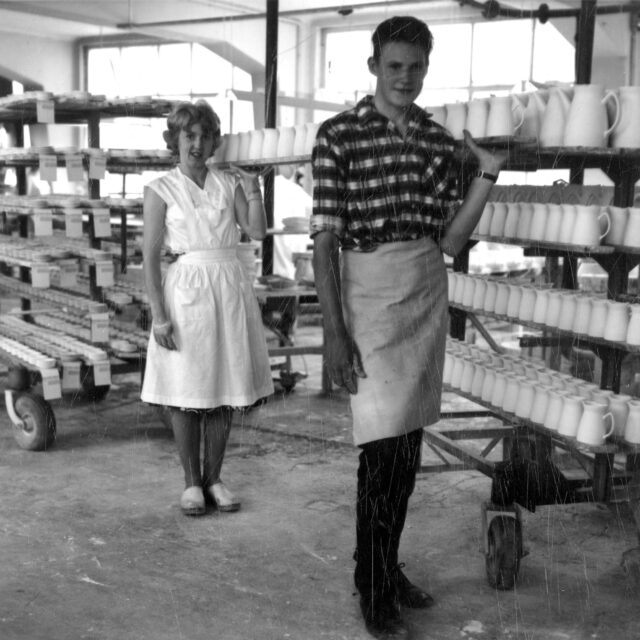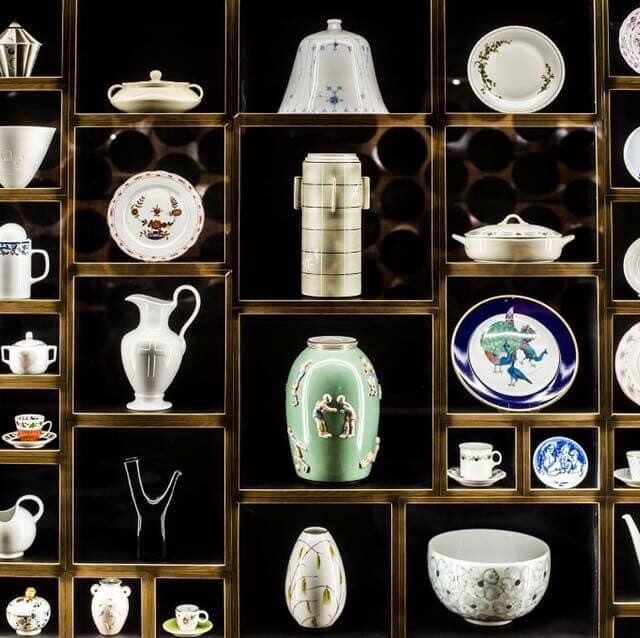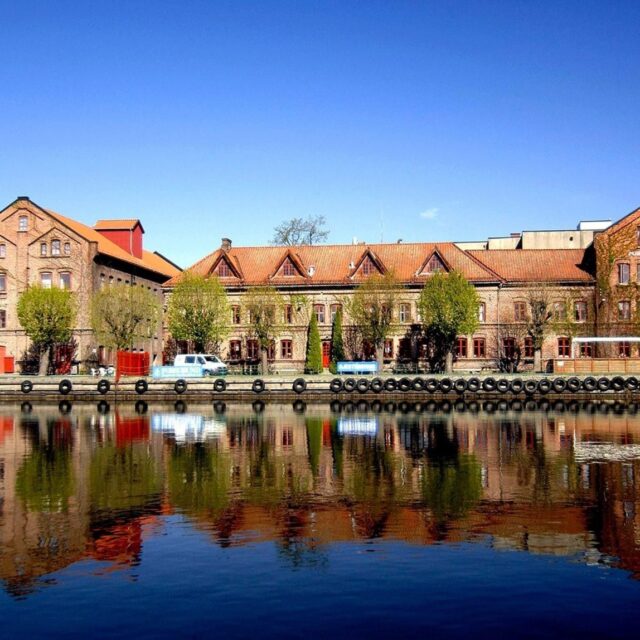
Telemark Museum is a consolidated museum that operates Henrik Ibsen Museum and Brekkeparken in Skien, Porselensmuseet in Porsgrunn, Ulefos Hovedgaard in Nome and Kittelsenhuset in Kragerø, in addition to DuVerden Vitensenter, which has been established as a separate company. This is a result of the national museum reform that has been underway since 2002. The purpose of the reform is to improve the quality of Norwegian museums by creating fewer but better units. The process for Telemark was completed in 2008.
Following the reform, Telemark county has three consolidated museums, of which Telemark Museum is one. The other two are the Norwegian Industrial Labour Museum and the West Telemark Museum.
The museum has four departments that have overall responsibility for all museum facilities. The heads of the departments make up the museum’s management team, together with the director.
The initiator of the establishment of the Skien Museum was Johan Koren Christie, nephew of diocesan official Wilhelm Frimann Koren Christie (1778-1849), president of the Storting from 1814, who also founded the Bergen Museum. On 1 February 1891, Johan Koren Christie sent out an “Invitation to Establish a Museum in Skien” in which he emphasised arguments such as educational purposes, preservation of Telemark’s arts and crafts, and cultivating significance. In other words, Christie wanted the museum to become a cultural institution in the town with an important role in the education of children and young people, and to ensure the quality of handicrafts, arts and crafts. His goal was also that the museum’s collection of mineral deposits could provide fertile ground for new industry. The invitation was sent to 42 leading men in the municipality and county, the judiciary, the clergy, the health service and the private sector.
The foundation took place on 22 May 1891 at a meeting attended by 40 of the 42 invitees. The museum’s statute consisted of 15 paragraphs. Skien’s museum was to become something far more than a town museum; it was to encompass the entire county and, ideally, the rest of Norway and abroad as well. The museum did not have its own premises until Skien Town Hall was completed in 1894. The museum moved into the attic, now the third floor.
The attic rooms in the town hall were small and gradually became too cramped for the ever-growing collections. Christie, who was now approaching 75, called for a larger museum with an associated “open-air museum” with old buildings from the villages, similar to the cultural-historical museums in Gudbrandsdalen, Valdres and Setesdal. This immediately received support from “all quarters”. In the autumn of 1908, a committee was set up with Gunnar Knudsen (Norwegian Prime Minister 1908-1910), Viggo Ullman (county councillor in Bratsberg) and Haldor Børve (architect).
On 26 February 1909, the general meeting of the Tourist Association resolved that the board should continue to work on the museum issue. It was proposed that the existing “Skien Museum” should be combined with a “Skien-Telemarkens Museum”. The committee met on 11 August and carried out inspections of Rønningen Forest, Roligheten and Søndre Brekke – alternative locations for the new museum. Søndre Brekke was chosen, as Rønningen was too far from the town and Roligheten was too small. On 16 September, the purchase was finalised and the new limited company Brække was constituted. The following board was elected: Amtmann Ludvig Christophersen was elected chairman; Chief Justice Blichfeldt became vice-chairman. Wholesaler H. H. Holta, mill owner H.C. Hansen and postmaster Kr. Jahnsen were also members of this new board. Bank cashier Lausen Dahl was appointed secretary, treasurer and accountant. An sum of money was left to the Telemark Museum for use in connection with the establishment.
On 12 October 1909, the entire county committee met, together with the board of A/S Brække, the chairman of Skien Museum and Anders Sandvig from Lillehammer. Sandvig was called in as an expert to inspect the site and draw up plans. The laws for the museum were adopted and the name was decided to be “Telemarkens og Skiensfjordens Museum”. It was also decided that the working committee would act as a board until a new board could be elected by the next county council. In 1998, the name was changed to Telemark Museum. Today, Brekkeparken houses several old living rooms and buildings from various places in Telemark that have been moved from their original location and transported to the park.
In 2021, the museum’s new building, VEV, was completed. It houses offices, an exhibition area of approx. 900 m2, as well as a café, meeting rooms, an auditorium and a museum shop.
Telemark Museum manages around 80 antiquarian buildings, 20 of which are listed.
The museum’s collections contain of approximately 112,500 objects, around 2.6 million photographs and around 1,600 shelf metres of private archives, in addition to large book collections.
The work of uploading objects, photos and archives on the Digital Museum and the Archive Portal is ongoing. Telemark University College also scans archives for us through the Telemarkskilder project. Around 43,000 photos and artefacts are searchable online.
The museum’s archives are housed in Øvregate 39, with public rooms and a reading room.
Telemark Museum
Øvregate 41,
3715 Skien
phone +47 35 54 45 00
e-mail: post@telemark.museum.no
www.telemarkmuseum.no
Porsgrunds Porselænsfabrik
Norway’s only porcelain factory, Porsgrund Porselensfabrikk, is located in Porsgrunn, a city of around 34,000 inhabitants in the Telemark County in the south of Norway. The city has a long tradition of sea shipping, shipyards, and industry. Porsgrund was founded in 1885 by the entrepreneur Johan Jeremiassen, who during a stay in Germany got the idea of producing porcelain in his hometown, Porsgrunn. From the areas around Porsgrunn, quartz and feldspar were exported to porcelain factories in Europe, and Jeremiassen saw the possibility of using this in local production. Porcelain is made from a mixture of quartz, feldspar, and kaolin clay. Locally only the kaolin was the missing ingredient for this production, and this clay was easily imported.
The factory was built in a short period of time, and on 10th of February 1887 the first cups were made in this new factory. This would not have been possible without the help of foreign, competent personnel. In addition to clay, there was another thing missing in Norway, the expertise in production of porcelain. Professionals from other European countries came to Porsgrunn to heelwork in the factory, and foreign employees trained local workers in the art of manufacturing porcelain. Porsgrund’s first factory manager was German – Carl Maria Bauer.
Since the establishment, there has been continuous production of highly fired porcelain at the factory in Porsgrunn.
The early production
The early production at Porsgrund was of very high quality, and the product range was large and varied. As early as 1889, production included about 500 different models, and about 540 different decors. For the newly established factory it was important to show that they were capable of producing goods of very high quality, that could measure up to the European porcelain factories. Part of the first porcelain was produced primarily to be displayed at major trade fairs and exhibitions. For example, this full-size porcelain table and the vase, Vase Wedel, which is 81 cm high. Vase Wedel and the porcelain table were produced in 1888.
Both models and decors were largely imported, most probably from Germany. The claim for quality products and luxury production items proved costly, and around 1909 the factory had to turn into a more cost-effective production to reach a wider customer group. Therefore, the factory transitioned to a somewhat simpler production with less handcraft.
Christmas at Porsgrund
The Christmas elves in the motifs on the Nisseserviset were designed by Sigrid Rachlew, the 14-year-old daughter of the factory’s founder.
At that time, the Christmas elves decorated children’s dishes and a small pot cup but were not used as décor on whole tableware. It did not happen until the 1980s, when Porsgrund’s head of exports commissioned the designers to draft a Christmas tableware for the export market. At that time, Christmas tableware were not common in Norway, and few believed that there would be a market for Christmas tableware.
Designer Grete Rønning got the idea for the Hearts and Pines décor one evening she and her children were making Christmas decorations. They made paper hearts in red and green – thus came the idea, so simple, yet irresistible! Red and green, the Christmas colors themselves; red hearts and green pine twigs.
Grete Rønning drew sketches, these were approved and samples for the tableware were made. Hearts and Pines made great success in the US, especially among Norwegian-Americans, and a couple of years later the tableware was launched on the Norwegian market – with great success.
Christmas tableware make success in the 1980s.
With Hearts and Pine’s success in the US and in Norway, the chief designer at Porsgrund, Eystein Sandnes, got the idea to resume the old Christmas elf’s décor by Sigrid Raklev. As a start, the terrine with the elf’s decor was put into production.
The pieces decorated with Christmas elves sold well, and the décor was placed on cups, bowls, and plates, and then the whole tableware. This Christmas tableware continue to be very popular and is still in production. Heart and Pines is highly sought after on the second-hand market as it is no longer in production.
Nora Gulbrandsen
During its first decades, Porsgrund received many awards at home and abroad, but moving towards the 1920s more and more criticism arises from different voices saying that the factory lacks innovation. Porsgrund was in great need for innovation, as most of the goods were considered old fashioned based on neoclassical forms. Innovation was obtained by hiring a young and aspiring female designer named Nora Gulbrandsen, in 1928. The production, which until then had been mostly very traditional and based on older models and decorations, now had a whole new expression in form and color. Many of the new models were based on geometrical forms and the patterns had a completely different expression. Art deco found its way to Porsgrund.
The entry of the designers
Nora Gulbrandsen left Porsgrund in 1945, and again a great need for renewal arose. The market for porcelain was good, but the production mostly consisted of old models. One of the first things Porsgrund’s then new director, Jacob Møller did, was to announce a competition for the students in the ceramics class at the Norwegian National Academy of Craft and Art Industry.
The first prize went to Konrad Galaaen. Other students from the class who received awards in the competition would also have a major impact on Porsgrunds production and design throughout the 1950s, 60s and 70s. Tias Eckhoff, Arne Lindaas and Eystein Sandnes all became designers who throughout their careers at Porsgrund and elsewhere, influenced the history of Norwegian industrial art in the latter half 20th century.
Konrad Galaaen
Konrad Galaaen joined Porsgrund in 1947 after completing his studies at the Norwegian National Academy of Craft and Art Industry, and worked at the factory throughout his professional career, until his retirement at the age of 70 in 1993. Galaaen studied both ceramics and painting. We find most of his production intersecting these disciplines, namely his decorations in chamotte goods. Locally it is especially these distinctive decorations in chamotte that he is known for. These can be found in all sizes, from small birds to very large decorations that have been used both inside and outside public buildings. In Porsgrunn city center they are a visible part of the cityscape.
Galaaen liked to experiment within the nonfigurative. He believed that ceramics as a material were easier to understand than the painting, because the sense of material facilitates understanding, especially within the nonfigurative. The nature of the material simply does not allow for the decorations to be naturalistic, just decorative.
Sanitary porcelain and Chamotte
Porsgrunds Porselænsfabrik established its own department for the production of sanitary porcelain in Porsgrunn in 1948. Toilets and washbasins were produced here, as well as some tableware parts in the coarser sanitary porcelainware. In 1965, the Sanitary Porcelain Factory got a new department “Tile Department”, where ceramic tiles were produced. The department was later named “Studio Galaaen” as it was led by Konrad Galaaen, and was his workshop for the production of tiles, reliefs, and decorations in chamotte.
Chamotte is a type of refractory clay, coarser and more porous than porcelain, and the color of the material is yellow/brownish.



